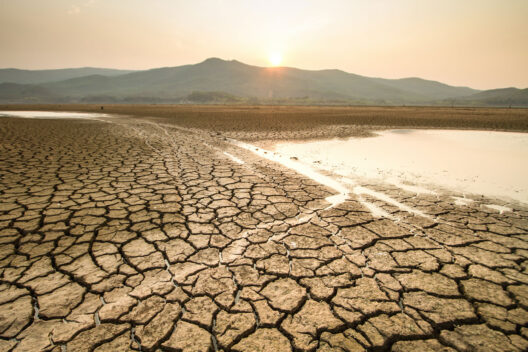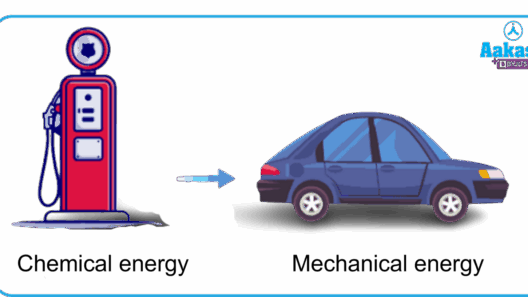The concept of energy conservation is a pivotal tenet within the realm of physics and environmental science, distinctly impacting our understanding of how energy functions in various systems. Central to the dialogue surrounding energy conservation is the question of whether it operates on qualitative or quantitative principles. This discourse not only encapsulates theoretical frameworks but also reflects practical implications in diverse fields such as engineering, environmental conservation, and policy making.
To embark on this inquiry, it is imperative first to delineate the terms qualitative and quantitative within the context of energy conservation. Qualitative aspects pertain to the characteristics, properties, and effects of energy, while quantitative aspects involve measurement, numerical representation, and mathematical calculations associated with energy transfer and transformation.
One of the most salient principles in physics is the conservation of energy which asserts that energy cannot be created or destroyed, only transformed from one form to another. This principle is fundamentally quantitative; it is expressed in mathematical terms, allowing for precise calculations of energy input, output, and loss in any given system. For instance, consider a hydraulic system, where potential energy is converted into kinetic energy as water flows through pipes. The equation governing this transformation necessitates quantitative measurements of mass, gravitational force, and height, fundamentally anchoring the principle in numerical data.
However, while the conservation of energy predominantly exhibits quantitative characteristics, its qualitative implications are equally significant. The transition between energy forms does not only produce measurable outputs but also engenders diverse qualitative changes in the systems involved. For instance, the conversion of chemical energy in fossil fuels to thermal energy in engines may lead to an output of different forms of pollution—a qualitative shift that affects environmental sustainability. Such qualitative outcomes are intricately bound to societal concerns, highlighting how energy conservation is not merely a numerical phenomenon but a vital component of ecological health.
Another critical area where qualitative and quantitative aspects converge is in the assessment of renewable energy sources. Solar, wind, and hydropower serve as quintessential examples of energy systems where conservation principles manifest both quantitatively and qualitatively. The efficiency of these systems is quantitatively measured through parameters such as energy output versus input, yet the impact of utilizing these renewable sources extends qualitatively to reductions in greenhouse gases and improvements in air quality. The qualitative benefits underscore the importance of transitioning to sustainable energy practices, reinforcing the argument for energy conservation as an imperative for ecological stewardship.
When delving deeper into educational content about energy conservation, readers can expect a varied array of formats. Infographics can provide a visual representation of energy transformations, effectively illustrating quantitative data in an accessible manner. Conversely, narratives surrounding the socio-economic impact of energy conservation initiatives may leverage qualitative analysis to explore community perspectives and environmental justice. The juxtaposition of these formats encourages a multifaceted understanding of energy conservation that transcends numerical data.
In academic literature, discussions often elucidate the interrelationship between qualitative and quantitative research methodologies. Quantitative studies may leverage statistical analyses to measure energy efficiency, while qualitative studies could focus on interviewing stakeholders about their perceptions surrounding energy conservation initiatives. This integration of methods enhances the depth of analysis, offering a holistic view of energy conservation that considers both measurable indicators and human experiences.
Policy discussions and environmental legislation also reflect the qualitative and quantitative dichotomy inherent in energy conservation. Regulatory frameworks that set emissions standards are firmly rooted in quantitative data, using specific metrics to gauge compliance and efficacy. However, the qualitative narratives surrounding the necessity for such policies often stem from historical injustices, public health concerns, and long-term sustainability goals. This interplay accentuates that policy must be informed both by rigorous data and by the qualitative impacts those policies engender in communities.
Furthermore, as technology advances, the intersection of qualitative and quantitative assessments in energy conservation becomes increasingly complex. Innovations such as smart grids embody quantitative elements through their capacity to monitor energy usage in real-time, but they also give rise to qualitative discussions about consumer behavior and energy literacy. Engaging with these technologies encourages a broader discourse on how energy conservation is perceived and enacted at the individual and societal levels, further elucidating the dynamism present within this field.
In exploring educational resources, various editorial styles emerge, blending qualitative storytelling with quantitative data analysis. Audiences can anticipate academic articles laden with statistical evidence accompanied by case studies that narrate real-world applications of energy conservation principles. Conversely, popular media might adopt a more accessible approach, utilizing qualitative testimonials to illuminate the personal impact of energy efficiency programs while referencing key quantitative statistics to support their claims.
Ultimately, the discourse surrounding whether conservation of energy is qualitative or quantitative reveals an intricate tapestry of interconnected strands. Central to this discussion is the recognition that while the conservation of energy is fundamentally rooted in quantitative measurement, its qualitative implications cannot be understated. Knowledge dissemination efforts, encompassing diverse content types and educational methodologies, will be crucial in advancing both public understanding and effective policy initiatives. This duality not only enriches the comprehension of energy dynamics but also fortifies our collective commitment to sustainable practices, ensuring that energy conservation remains at the forefront of societal priorities.








